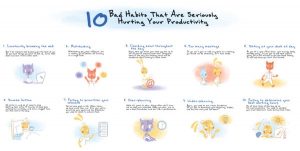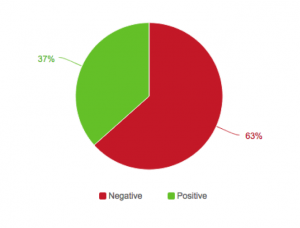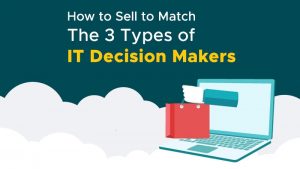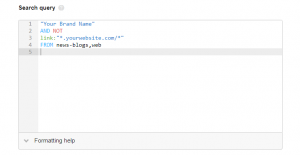
In my previous article, I covered how to hire your first Customer Success Manager. Now that you have “the one”, how do you get them up and running? Onboarding the first person into a new department can be challenging (almost as challenging as finding them). As someone who has successfully onboarded many individuals into new roles and departments, I am going to share a few tactical actions that really helped along the way.
Before You Begin
As with onboarding a customer, onboarding a new member of your team should have a plan. You want your new team member to know what their day to day will look like, what success looks like, and provide them with a toolkit that’ll take them across the onboarding finish line.
Take stock of what you want to achieve with this new role/department. Ask yourself a few questions about your end goal, and use that as a guiding force to create your overall plan.
Step 1: Success Brain Dump
Every good plan evolves into a great plan by asking the right questions. Questions help you to brainstorm and prioritize what you actually want to achieve in your onboarding agenda. Some of the questions you may ask yourself when onboarding a new hire into Customer Success are:
- What does success look like in this role?
- What does my CSM need to know to be able to achieve these expansive goals?
- Who do they need to have relationships with?
- When should they start talking to customers?
What does success look like in this role?
The importance of understanding what success should look like before you get started will really help guide what your new hire should learn, where they should focus early on, and who they should be partnering with. It also gives you, the hiring manager, a firm guideline that’ll help you not overload your new hire by attempting to boil the ocean. Most likely, this’ll be the first iteration of many more to come on what success looks like, so don’t get too hung up on the nuances, just get some success goals down!
Some great examples would be:
- Reduced Customer Churn
- Increased Customer Engagement
- Decreasing overall time to value for customers within your product
- Increased customer upsells/cross sells
- Increased customer references for Marketing
- Customers guiding our product with amazing feedback
What does my new CSM need to know to be able to achieve these expansive goals?
Really think through these points and make sure you are accounting for what they need to learn over the next couple of weeks. Remember to always build a strong foundation of knowledge and then pepper in the rest.
A few examples from this question may be:
- What tools will they use?
- How will they become experts on your product?
- How will they understand your current customer base?
Who do they need to have relationships with?
This may in fact be one of the more important things to think through when onboarding your new CSM. They will need strong partners in all areas in order to help drive success for the customer, the company, and themselves. It is your responsibility as a hiring manager to facilitate those relationships and set up the appropriate expectations.
A few departments that will always directly interact with Customer Success are:
- Sales/ Account Management/ Account Executives — These guys are your mutual partners for a successful customer. From the initial deal to identifying expansion revenue.
- Product — If Success is doing the job optimally, they will be constantly receiving feedback on your product from those high value customers and need to have a strong advocate to pass this along to.
- Support — They are your reactive resource, eyes and ears, and constant communicators with the entire customer base. They are an invaluable resource to CSM’s.
- Marketing — Got Happy Customers? If so, they could be great case studies. Let’s also not underplay the value of nurture campaigns and customer marketing. This group is our go to.
Lastly, when should they start talking to customers?
Never turn your new CSM lose and have them just contact customers. Have a firm strategy and a communication model (high, medium, low touch communication models are always valuable). And never let them contact customers until they have successfully onboarded and have value to add. It’s never okay to reach out to just say “Hi!”.
- This will be the first thing on your newbies mind, but should be the last thing they should do during onboarding.
Step 2: Create your timeline
How long will onboarding take you? The answer really depends on the individual and their background. Generally, I like to break onboarding out into 3 weeks. Here is an example of what we could cover during this three-week window.
- Week 1 Theme: Who are you? Who are we? What does it all mean?
- They should take this week to learn everything from where the coffee is, to becoming experts on the product that they are getting ready to support. Most companies have great onboarding in week one. You can learn about HelloSign’s approach here.
- Provide them with a detailed schedule so that they know where they will be and what they will be learning every hour.
- Provide them with the milestones that they will need to be able to achieve at the end of every day or week (example: must be able to independently look up account info). Not only is this a great guide for you, the hiring manager, on their progress, but it’s also a beacon for your new hire on how they are performing overall.
- They should take this week to learn everything from where the coffee is, to becoming experts on the product that they are getting ready to support. Most companies have great onboarding in week one. You can learn about HelloSign’s approach here.
Key takeaway: By the end of week 1, your Customer Success Manager should be able to successfully navigate your product (maybe not at pro status, but definitely have the fundamentals down). They should also have a strong understanding of your values, how to apply those values in their decision-making process, and any other important policies. And most importantly, your new superstar should know what success looks like for them so that every day they have a purpose.
- Week 2 Theme: Support, Partners, and Product, Oh My!
- Even though Customer Success should be a proactive group, they do need to know how to be reactive. During week 2 (and week 3), Customer Success should sit with Support. They should answer tickets. This helps them learn how to navigate the tools and find the answers.
- In addition, this is the week where your new team member will really get to know their partners. They will have a lot of meetings with all of the departments and key players that they will be working with. They should understand what problems these partners are trying to solve, and start to piece together how Customer Success could be integral in the resolution.
- Be a customer! During week 2, the CSM will benefit heavily from being a super user of your product. This is where they should hone in on becoming an expert on your product.
- Even though Customer Success should be a proactive group, they do need to know how to be reactive. During week 2 (and week 3), Customer Success should sit with Support. They should answer tickets. This helps them learn how to navigate the tools and find the answers.
Key takeaway: By the end of week 2, your Customer Success Manager should be able to navigate and demonstrate your product (pro status should definitely be on the horizon). If your Customer Success Manager cannot be a pro after two weeks, then your tool may in fact be too complex, and you may need to rethink your customer experience. Your Customer Success Manager should also be forging strong partnerships and have an understanding of the key players that they will interact with on a daily basis.
- Week 3 Theme: Meat, Potatoes, and Ensalada!
- Very simply put, by the end of this week, your Customer Success Manager should be ready to start reaching out to Customers (healthy ones), but not yet reach out. Remember, have a plan, just don’t reach out to say “Hi!”.
- They should have a strong understanding of the secret formula that makes a customer healthy (or at least your current iteration of that formula).
- Also, they should understand what data lies in each system. Remember, we are building out a team from scratch so we are going to want to really dig deep on what our healthy customers are doing, and work hard at having our unhealthy customers adapt those practices.
- Very simply put, by the end of this week, your Customer Success Manager should be ready to start reaching out to Customers (healthy ones), but not yet reach out. Remember, have a plan, just don’t reach out to say “Hi!”.
Key takeaway: By the end of week 3, your Customer Success Manager should have a strong foundation and really be ready to pepper in the more advanced concepts, like data flows, user activities, and how everything works together. Remember, you are really trying to create a “proactive” group rather than “reactive.” Of course human nature makes us want to start reaching out to customers immediately, but in order to reiterate proactivity and get started correctly, make sure onboarding is complete and plans have been forged before reaching out.
Step 3: Double Back to Your Plan and Stress Test It
Here are just a few more things to think through before you consider your team member onboarded.
- Do you have a customer communication strategy? If you are like a typical SaaS company, you have a TON of customers at various price points. What relationships will your CSM own? What will you automate?
- What ongoing meetings will your CSM need to partake in? If there is a weekly Sales meeting, make sure your CSM is in it. If there is a product feedback meeting, make sure your CSM is in it.
- How do you measure customer sentiment? Do you collect customer satisfaction after every interaction with Support? Do you have an NPS program? Figure out early on how your CSM will interact and monitor the happiness of their customers and what piece of the pie they will own.
- Goals! We touched upon this earlier, but make sure you now cement the goals that you want to achieve in a format that everyone can use.
- Measure everything. Really, measure everything that can be measured. The first couple of quarters of a new department are going to be your baseline quarters. The following quarters will be your improvement quarters. You first have to have baseline measurements in order to be able to improve.
There is no way for me to capture everything that goes into onboarding a new department/role into your organization in a short article, but hopefully these few tactical tidbits will help get you started. Stay tuned for another post that’ll be coming out soon on how to set up your Customer Success Manager for success in your organization.
Business & Finance Articles on Business 2 Community(135)
Report Post









